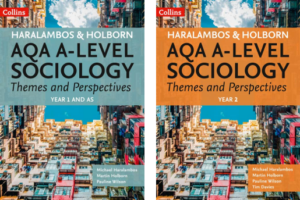In the last 20-30 years sociologists have been interested in looking at the changing shape of the family such as the increase in single parents, cohabiting couples, same sex relationships and reconstituted families, but there seems to be another type of household and way of life on the rise; that of creative singledom. In Britain in 2017, there were 3.9 million people living alone aged 16 to 64 years and in some cities across the US the number of single occupancy households has tipped over 50%. It is estimated that Scandinavian countries and Japan may have even higher figures of solo livers.
This pattern also seems to extend into the number of people choosing a single life as well as just choosing to live alone. Big selling books such as ‘The unexpected joy of being single’ by Catherine Gray and ‘How to be single and happy’ by Jenny Taitz are an indictment of a shift in the behaviours and attitudes towards relationships in many developed, westernised societies. It seems that being single is no longer seen as taboo, a shame or a status that generates head tilts, arm rubs and sympathy from others.
The Functionalist Talcott Parsons devised the ‘Functional fit’ theory in 1955 and helped to explain that family structures adapt to meet the needs of a society and thus explained why families shrunk from extended to nuclear during the movement of pre to post-industrialisation. As urbanisation increased, it suited societies to have a breadwinner and a home-maker or what was referred to as the instrumental and expressive roles. In other words, men and women needed each other, women did not work and so their source of income was the male wage, men also relied on the woman to raise the children and look after the home. Perhaps many couples were formed out of pure necessity rather than actual desire?
In many societies today, we no longer ‘need’ to live with one another; people earn their own money, carry out their own housework, cook for themselves and in many cases raise children alone too. If we take Parson’s functional fit theory then perhaps the next natural stage of the process is singledom, a state that suits the needs of independent, self-sufficient individuals. For many, the act of single living is therefore not simply a temporary stage before finding the next partner but is actually a scenario that brings both benefits and fulfillment.
In his book ‘Going solo’ Eric Klinenberg argues that if we can afford to live alone, then we do, seeing it as “a mark of distinction, not a social failure” – in other words it is a luxury to be able to have your own space and not have to share, the luxury of having your own bathroom ranks pretty high amongst many solo livers for example. The New York university sociologist interviewed over 300 solo livers and his study concluded that the vast majority of these (across all age ranges) were very positive about living alone and in fact many were quite smug about the fact they felt they had identified the ideal living scenario and household.
Although the benefits of solo living may be clearly apparent, it is perhaps even more surprising that people are also choosing a single life, more people than ever are not only choosing to be single but also thriving on and enjoying the status too. Klinenberg estimates that 50% of adult Americans are single, a figure that has ballooned in recent times. Gray’s research in Britain is almost identical with over 50% of 25-44 year olds estimated to be single. We know that the popularity of marriage is dwindling in many cultures but this figure of single life goes beyond just choosing not to marry. So why are people taking this option?
Gray believes that we have been socialised from a young age to chase a relationship and led to believe that our lives will be much more fulfilled and happy as a result of achieving marriage or a relationship. She notes that “We’ve been societally programmed to place finding our other half, our lobster, our ‘reason for being’, above everything else in life. I spent my twenties and early thirties frantically husband-hunting, launching myself from relationship to relationship, fearful of being single, and intent on dating like it was my job. Until I realised life is so much bigger than our love lives”.
Taitz follows a similar line of argument stating that “The belief that your happiness hinges on an external circumstance that you can’t control (i.e. meeting a romantic partner) not only makes it harder to find love, but also sets you up for unhappiness.” She goes on to discuss the benefits of single living by noting that “Developing a sense of compassion for ourselves will also improve our self-acceptance, mindfulness, and positive emotions”.
Therefore, what all these studies seem to have in common is the notion that our individual happiness does not necessarily correlate to whether we are in a relationship or not, meeting a new partner is not the magic recipe to end any anxieties or woes nor is getting married the missing piece of the perfect life puzzle. At a time when individuals have more choice, freedom and diversity than ever before then it makes sense that many are exploring an alternative route to the traditional nuclear family.
Single living and complete adult singledom is probably someway from fully replacing cohabiting couples and marriage, but it is certainly now not a status that can be classified as a tiny minority. It also appears to be shaking off its negative connotations; ‘single’ seems to increasingly be a choice rather than simply a period of flux or transition. In a few years’ time we may finally hear the end of the question ‘So, why are you single?’ though perhaps the answer to this should simply be ‘Why aren’t you single?’……..though ‘I like having my own bathroom’ also works pretty well.
Sources
‘The Unexpected joy of being Single’ by Catherine Gray
‘Going Solo’ by Eric Klinenberg
‘How to be single and happy’ by Jenny Taitz
By Matthew Wilkin
Matthew has been teaching Sociology for 16 years and has taught in the UK, Kenya and Spain, he currently teaches at Bellerbys College in Brighton. Matthew runs the www.podology.org.uk website and is continuing his mission to visit every country in the world.
He is also a contributing author to the new Themes and Perspectives books written specifically for the AQA A-level Sociology specification.




